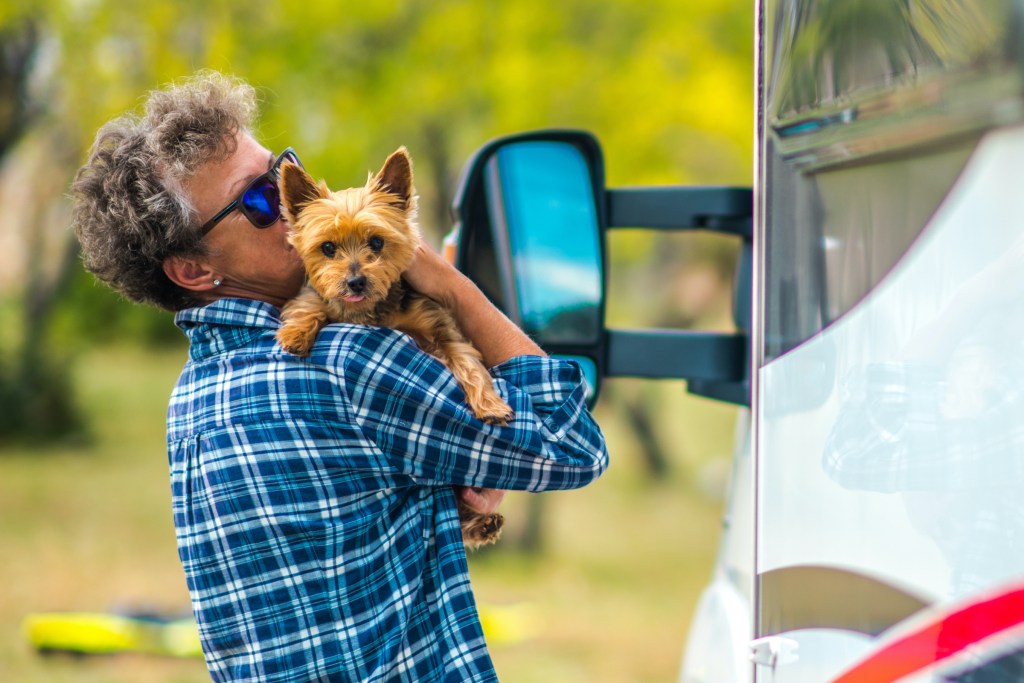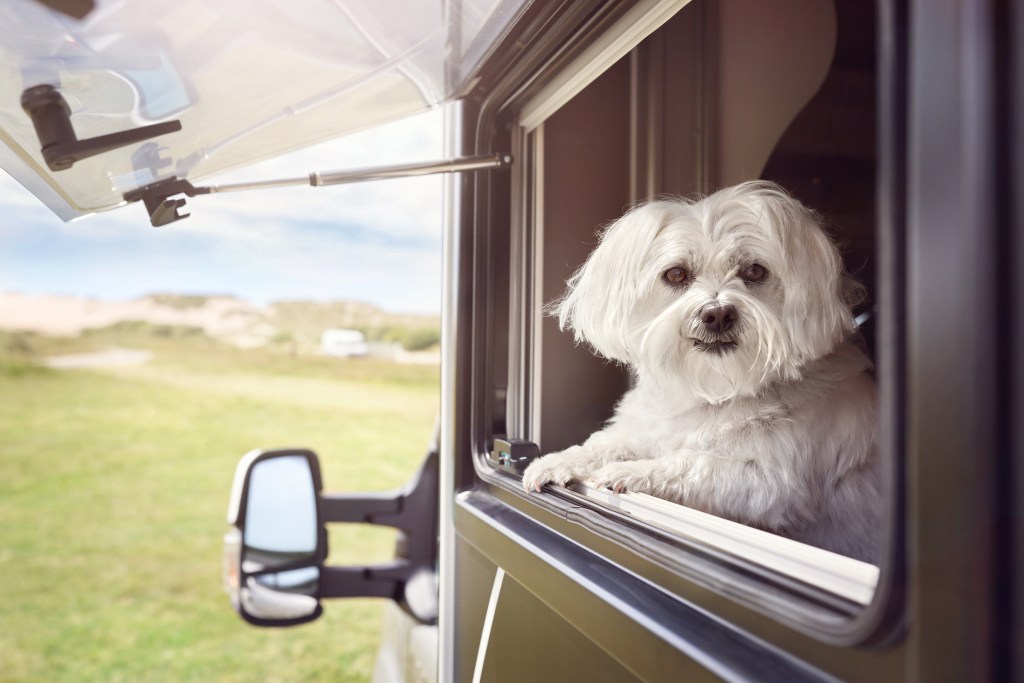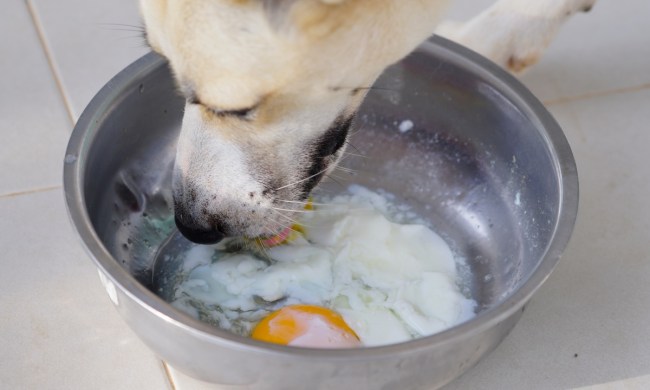Traveling with your dog can be an adventure unlike any other, no matter the destination. For pups who enjoy being on the road — and who don’t suffer from motion sickness — spending some time traveling in an RV can be especially fun. The wind in their fur and all their favorite folks with them. Can it get any better?
Actually, it can. There are a few small yet life-changing RV accessories that can turn a regular old RV into the safest relaxation space for your four-legged friend. From a few obvious additions to some more unique accessories, we’ve considered them all to bring you the most important, most effective safety tools for dogs.
For RVs with dogs, consider these pet care travel essentials:
Temperature-control essentials
Even the most modern RVs with top-notch air conditioning systems can have a hard time keeping up on the hottest days. Especially if you’re traveling somewhere like the American Southwest, you’ll want to have multiple backup plans in case your dog overheats.
Temperature alert systems
Anyone can read a thermometer, but you’ll need something a little more advanced to get instant access to weather safety information. Luckily, there are a number of RV temperature monitors and alert systems that will keep you in the know no matter where you are. This is especially important if your furry friend stays unattended in the RV during your trip, even for short amounts of time.
Remember, even though an RV is a lot larger than a passenger car, it can still get too hot to be safe when left in the sun for a while. Don’t make your best buddy face that heat!
Instead, invest in an RV temperature alert system like the Waggle RV/Dog Safety Temperature and Humidity Sensor. This device monitors and informs you about weather conditions at any location with just a few clicks on your phone — no WiFi necessary. Now you’ll be able to check on your pup’s environment in an instant, so you’ll know before anyone else if conditions become unsafe.
RV sunshade
Another way to keep your RV cool during the summer months is to create your own shade. Retired meteorologist Jim Lushine told the Florida Sun-Sentinel that air in the shade can measure in at 10 to 15 degrees lower than the air exposed to direct sunlight—but this is a phenomenon that can be felt on any warm day.
To keep your RV and your precious pup from overheating, you may want to shop for a windshield sunshade. This will keep the wheel, dashboard, and front of your vehicle out of the sunlight, though window coverings and awnings can be just as helpful for the sides of the RV. This artificial shade is also a great way to give yourself or your pooh a little extra privacy, so it’s a win-win!

Identification methods
Even if your dog is going to stay within the safety of your vehicle, you’ll want to give him at least one form of identification in case of an emergency.
Microchip
Many animal rescues and veterinarians recommend trying out a microchip for your dog. It’s programmed to hold your contact information in case anyone finds your buddy wandering about. Madison Animal Care Hospital warns about one common misconception, though: unlike what many pet parents think, microchips are not GPS-enabled. They do not help you locate your dog, but they do ensure that your information stays with your pet no matter where they go.
ID tag
Collars and ID tags are an even more popular way to keep a dog identifiable, and they’re even required at some parks and campgrounds. Luckily, collars are super comfortable for most dogs to wear. Plus, they come in so many adorable colors and designs, so your pet’s personality won’t be compromised one bit. Remember to keep your dog’s ID tags up-to-date with your most recent information, and you’re good to go!

Portable exercise pens and gates
RV dogs get plenty of time cuddled up close to their people when they temporarily live in a large vehicle, so they should get the chance to romp and play a bit, too. For smaller friends, a portable playpen for dogs could be exactly what you need. Your buddy will be able to run and play off-leash for a while, and you’ll know they’re safely contained in a small area.
For larger dogs, you may need to get creative. There are a number of doggy fences that are perfect to use inside the RV, but there aren’t many that accommodate larger outdoor spaces. Instead, use part of your vehicle as a fence, too! As long as your buddy can’t crawl under the RV, you can place each end of the fence against the vehicle and give your dog some extra space to relax.
With these RV essentials on your next shopping list, you’ll be nearly ready to hit the road. Don’t forget to pack all your dog’s basics — including food, bed, and toys — as well as a few things to keep your pooch entertained. Don’t be surprised if your fur baby needs some time outside of the RV every now and then, though! Even the laziest of pooches need to take a potty break sometimes.
Happy travels!



